Abstract
K+ and Cl− contents of guard cells and of ordinary epidermal cells were determined in epidermal samples of Allium cepa L. by electron probe microanalysis; malate contents of the same samples were determined by enzymic oxidation. KCl was, in general, the major osmoticum in guard cells, irrespective of whether stomata had opened on leaves or in epidermal strips floating on solutions. The solute requirement varied between 50 and 110 femtomoles KCl per micrometer increase in aperture per pair of guard cells. Stomata did not open on solutions of K iminodiacetate, presumably because its anion could not be taken up. Stomata opened if KCl or KBr was provided. Taken together, the results indicate that the absence of starch from guard cells deprived them of the ability to produce malate in amounts of osmotic consequence and that the presence of absorbable Cl− (or Br−) was necessary for stomatal opening.
Previous nutrient supply of the plants determined whether the charges of K+ in guard cells were completely balanced by Cl− or only partially. Addition of K2SO4 to the nutrient solution reduced the participation of Cl− in stomatal ion transfer, even if epidermal strips of these plants were later exposed to KCl solution. The anion supplying the charge complement in these cases is not known.
Although malate appeared not to participate in stomatal ion transfer in onion, epidermal samples of this species did contain malate. Malate accumulated in the epidermis of leaves put into the light but disappeared from illuminated epidermal strips floating on solutions. In whole leaves, epidermal malate content was positively correlated with stomatal opening; in epidermal strips floating on solutions, the correlation was negative or absent.
Full text
PDF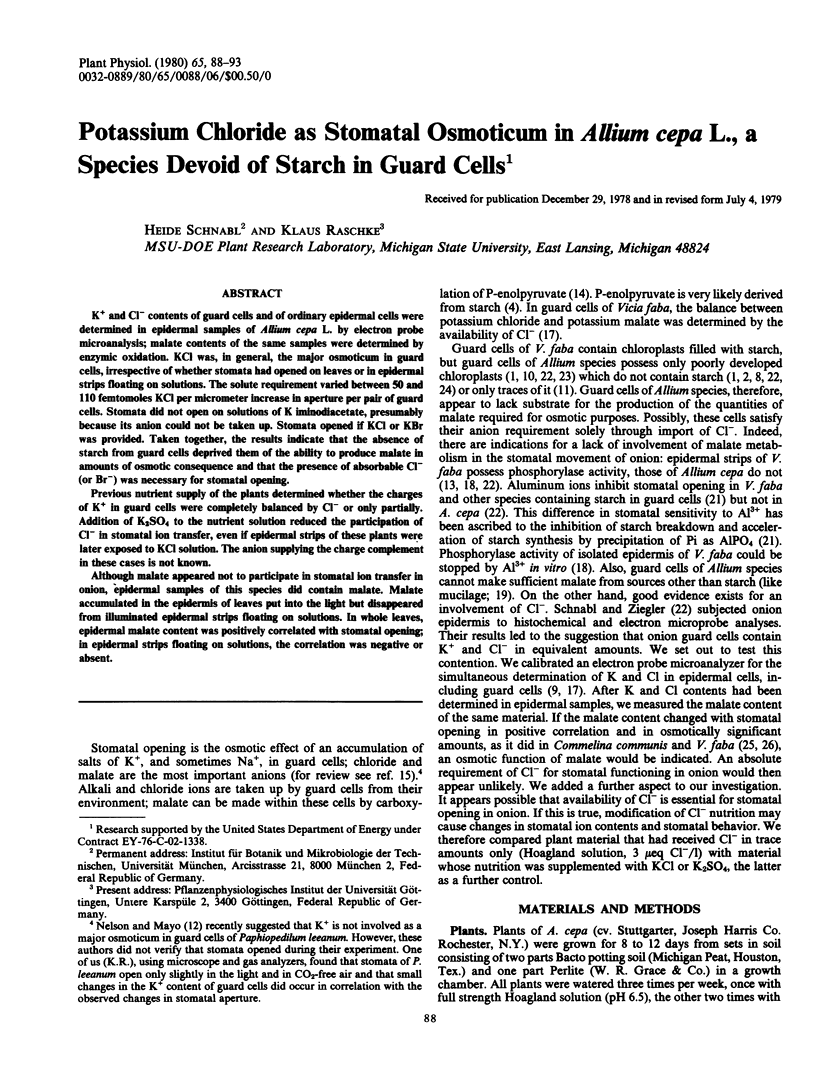
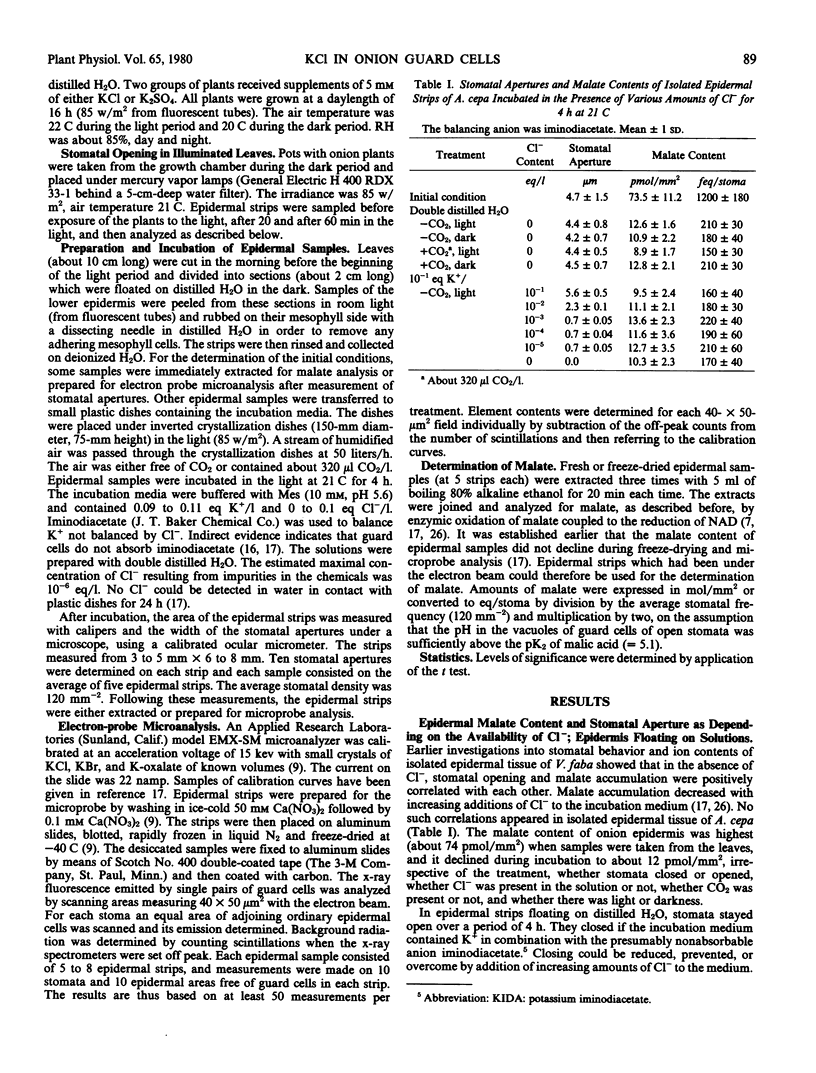
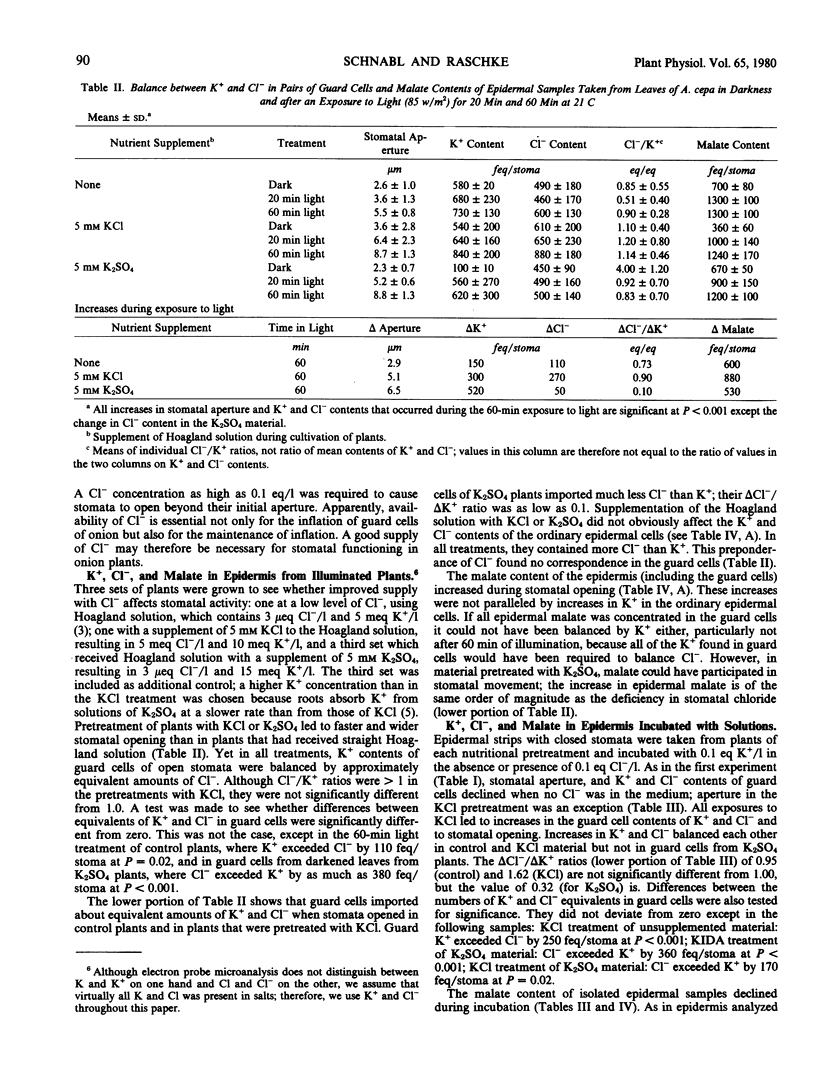
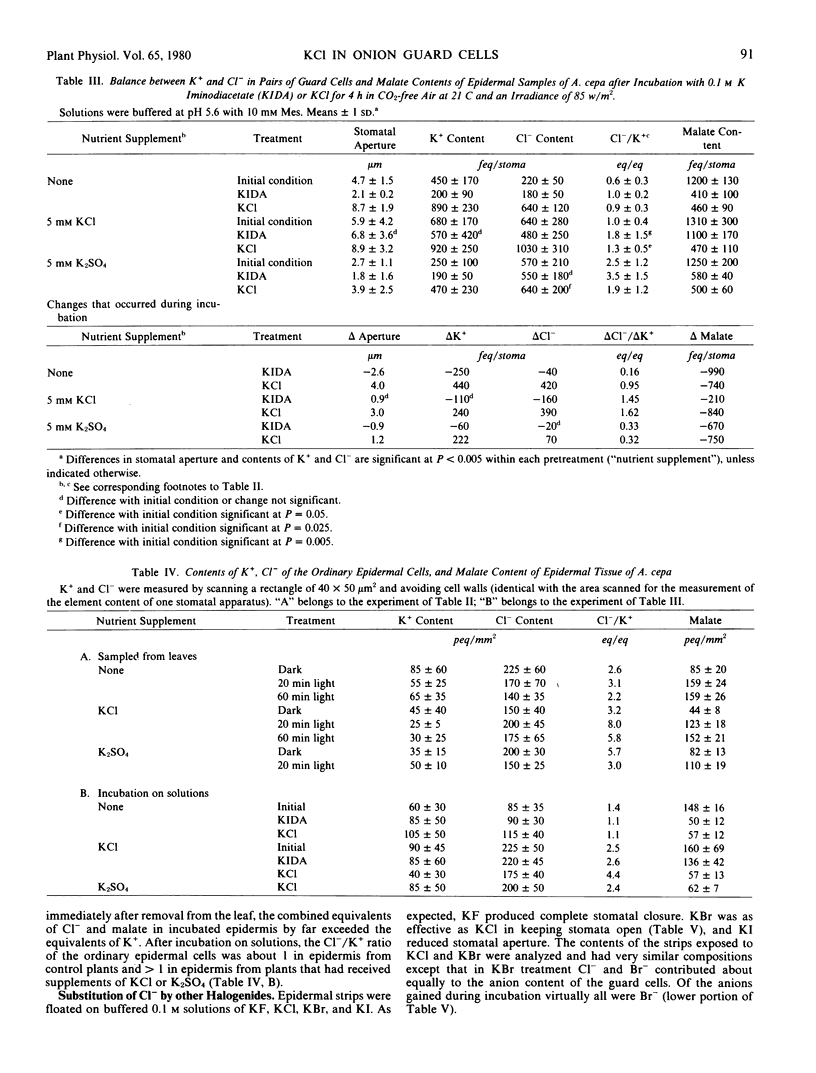
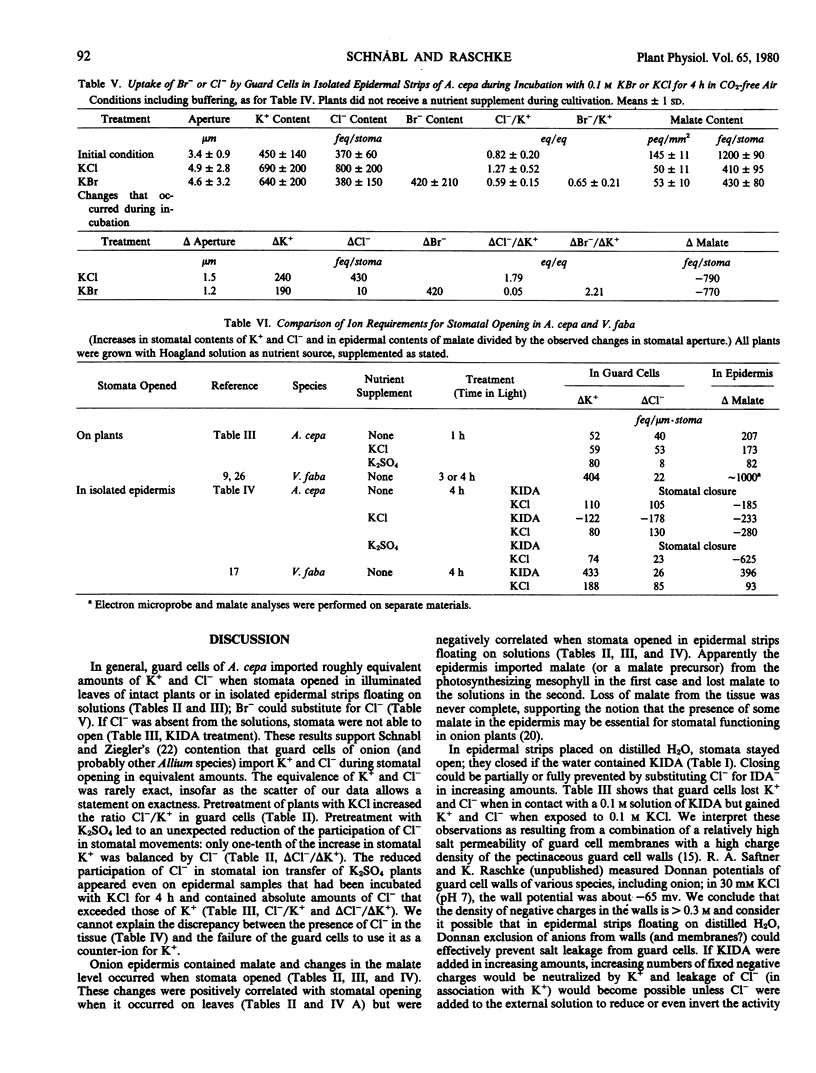

Selected References
These references are in PubMed. This may not be the complete list of references from this article.
- Epstein E., Rains D. W., Elzam O. E. RESOLUTION OF DUAL MECHANISMS OF POTASSIUM ABSORPTION BY BARLEY ROOTS. Proc Natl Acad Sci U S A. 1963 May;49(5):684–692. doi: 10.1073/pnas.49.5.684. [DOI] [PMC free article] [PubMed] [Google Scholar]
- Humble G. D., Raschke K. Stomatal opening quantitatively related to potassium transport: evidence from electron probe analysis. Plant Physiol. 1971 Oct;48(4):447–453. doi: 10.1104/pp.48.4.447. [DOI] [PMC free article] [PubMed] [Google Scholar]
- Outlaw W. H., Kennedy J. Enzymic and substrate basis for the anaplerotic step in guard cells. Plant Physiol. 1978 Oct;62(4):648–652. doi: 10.1104/pp.62.4.648. [DOI] [PMC free article] [PubMed] [Google Scholar]
- Raschke K., Schnabl H. Availability of Chloride Affects the Balance between Potassium Chloride and Potassium Malate in Guard Cells of Vicia faba L. Plant Physiol. 1978 Jul;62(1):84–87. doi: 10.1104/pp.62.1.84. [DOI] [PMC free article] [PubMed] [Google Scholar]
- Van Kirk C. A., Raschke K. Presence of Chloride Reduces Malate Production in Epidermis during Stomatal Opening. Plant Physiol. 1978 Mar;61(3):361–364. doi: 10.1104/pp.61.3.361. [DOI] [PMC free article] [PubMed] [Google Scholar]


